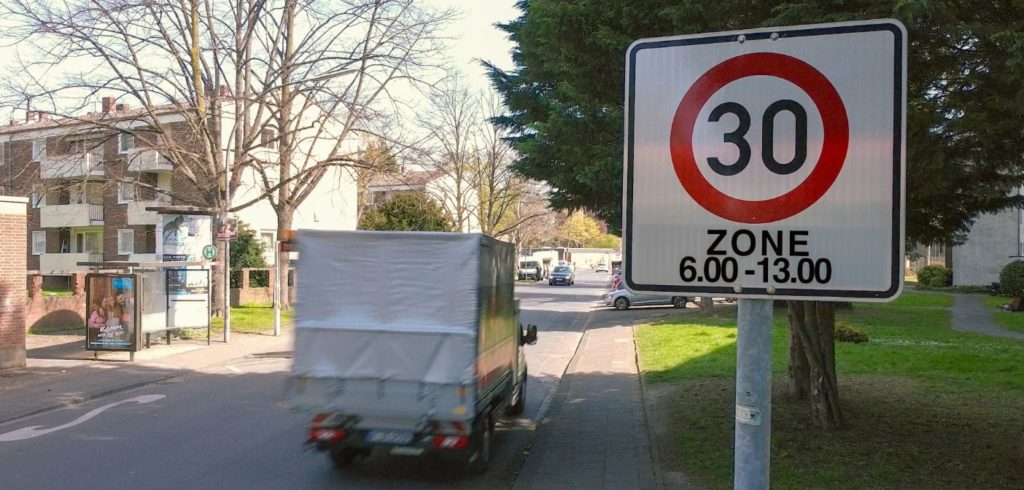Automotive OEM Ford is trialling connected vehicle technology using geofencing – a virtual geographical boundary – that could one day do away with the need for speed limit signs.
As well as potentially making streets safer for other road users and pedestrians, Ford’s Geofencing Speed Limit Control (GSLC) system could help drivers avoid inadvertently incurring speeding fines and improve roadside appearances.
“Connected vehicle technology has the proven potential to help make everyday driving easier and safer to benefit everyone, not just the person behind the wheel,” said Michael Huynh, manager, city engagement, Germany, Ford of Europe. “Geofencing can ensure speeds are reduced where – and even when – necessary to help improve safety and create a more pleasant environment.”
According to Ford, in Europe, up to 29% of road fatalities are pedestrians and cyclists, depending on the country. Setting up 30km/h zones is considered one key measure to reduce the risk to pedestrians in urban areas, as drivers have more time to react and the impact speed is lower.
While driver assistance technologies such as intelligent speed assist and adaptive cruise control with stop and go can help ensure drivers do not exceed speed limits, Ford said it believes its GSLC system is potentially more flexible and effective than on-board systems, and could in future be applied to its commercial and passenger vehicles.
Researchers are using two Ford Pro vehicles to analyse the impact of speed limiting in terms of improving traffic flow and reducing the risk of accidents. Testing with the all-electric Ford E-Transit vans extends to all 30km/h zones in the centre of Cologne, in Germany, as well as in selected 50km/h and 30km/h zones elsewhere in the city.

The trial is the result of a collaboration between Ford’s city engagement team, city officials in Cologne and Aachen, and Ford software engineers in Palo Alto, in the USA. Together with colleagues in Aachen, the Palo Alto engineers developed technology that connects the vehicle to the geofencing system for GPS tracking and data exchange.
The driver receives the information via the dashboard display cluster, with the new speed limit flashing below the current speed. The vehicle automatically reduces speed in line with the geofenced zone. The driver can override the system and deactivate the speed limit control at any time.
In the future, Ford’s GSLC system could enable drivers to set their own geofencing zones at speeds as low as 20km/h, including at depots and private facilities. Speed limits could also be set dynamically, to take into account local hazards, temporary road works and the time of day.
According to Ford, the German Traffic Code has over 1,000 types of road signs. In the UK, it is estimated that the number of road signs has doubled in the last two decades, to around 4.6 million in total, with the Department for Transport requesting that local councils remove unnecessary and unsightly signs.
Ford said reducing the number of signs on the roads could help to declutter cities, with drivers able to concentrate on the roads rather than keep watch for signs.
“Our drivers should benefit from the latest technical support, including geofencing based assistant systems that enable them to keep to the speed limits and fully concentrate on the road,” said Dr Bert Schröer, head of vehicle technology and mobility, AWB, a waste disposal company involved in the trial along with the City of Cologne.
The trial runs until March 2023 and is part of broader research initiatives testing pre-production and prototype Ford E-Transit vehicles across a variety of intensive real-world operating scenarios, including in the postal, municipal and utilities services, as well as last-mile and grocery delivery sectors within France, Germany, Italy, the Netherlands, Norway and the UK.
Ford is also using geofencing technology to improve air quality in cities, ensuring that the Ford Transit Custom plug-in hybrid electric vehicle runs automatically in zero-emission electric-drive mode whenever the vehicle enters a low‑emission zone.




